The airdrop track has experienced a major earthquake recently. ZKsync, LayerZero and Blast, which were originally highly anticipated, all officially held TGE in June. It was thought to be a feast for airdrop parties, but it turned out to be the birth of the "largest anti-loan in history" and the "largest witch database". In addition, Binance MegaDrop also implemented punitive measures for users who received rewards through multiple KYC. Not only were the wool parties anti-loaned, but they were also labeled as witches, and they complained bitterly under the double loss. The airdrop track, which was once regarded by countless people as a channel for getting rich quickly, has now been completely abandoned.
It can be said that the number of airdrop tokens was not satisfactory, but the overall market continued to be sluggish. Most of the airdrop tokens peaked when they were launched, and then plummeted all the way, and countless wool parties eventually lost their income. However, Is this chaos a staged phenomenon, or is it an inevitable result after the industry develops to a certain extent?
Around the above issues, this article combines the recent controversial ZKsync airdrop, LayerZero anti-sybil measures and Blast points system and other real-life materials to deeply analyze the current airdrop track pattern and its future trends. We believe that the era of getting rich by rubbing hair is history, and everyone should give up fantasy and find more suitable and more practical things to seek another way out.
ZKsync airdrop: Matthew effect, rat warehouse, ignoring old users
The most famous TGE and airdrop events in recent times include the ZKsync airdrop in June. Although its Airdrop share accounts for about 17% of the total token supply, the airdrop weight ratio is relatively high among well-known projects, but its distribution details and airdrop effect still cause dissatisfaction in the community. The reasons can be briefly summarized into three points.
First, there is an obvious Matthew effect in the airdrop distribution this time. Although ZKsync claims to be "very generous" in community rewards, as a star project with over 6 million active addresses, only nearly 700,000 addresses are eligible to receive airdrops, that is, only 10% of the addresses received rewards, which is basically the lowest among the major Ethereum Layer2 projects in the previous TGE.
In addition, compared with the dismal returns of most airdrop players, 23.9% of the airdrops were allocated to 9,203 addresses, and each of these 1.3% addresses received nearly 100,000 token rewards, about 27,000 US dollars, which ultimately made the minimum/maximum rewards obtained by different airdrop addresses differ by 100 times.
These data show that ZKsync's reward mechanism greatly favors a few top players.

Afterwards, it was verified that ZKsync allocated most of the airdrops to those who have more assets on the chain, or OGs and contributors in the community. ZKsync may hope to encourage this group of people to hold tokens for a long time. However, the result was not as expected. According to Nansen’s data as of June 30, of the first 100,000 addresses that received the ZK airdrop, only 19.3% continued to hold tokens, and the remaining addresses all sold part or all of the airdropped tokens.
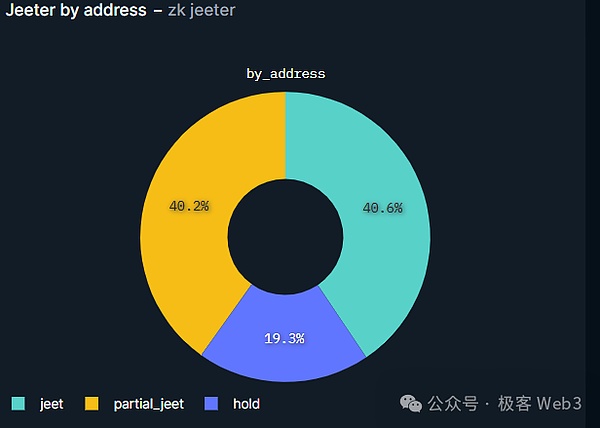
Second, in addition to the unreasonable distribution weights mentioned above, this airdrop distribution is also considered to have "rat warehouses". For example, although the holders of PudgyPenguins, MiladyMaker, Degen, and Bonsai did not directly participate in the ZKsync ecological interaction, they were still eligible to receive airdrops, and they received more airdrops than many users who actively participated in the interaction. The existence of these suspected "rat warehouses" has greatly diluted the real airdrop share of users, causing strong resentment in the community.
Interestingly, it is not just the airdrop players who oppose ZKsync, but also multiple project parties in the ZKsync ecosystem have joined the list of rights defenders. NFT project parties that have long been on the whitelist are not eligible to participate in the special airdrop activities that ZKsync gives to project parties in the ecosystem, while some MEME projects with less than 10,000 followers on Twitter, such as LongMao and Long, have received a certain share of airdrops, which can't help but make people suspicious.
In addition, many long-term operating projects in the ZKsync ecosystem, such as Zerolend and Element, have also tweeted that they have been treated unfairly. On the contrary, Aave, Ethena and some projects that have not yet been launched in the ecosystem have received airdrops, with Aave receiving the largest share this time. ZKsync used 0.5% of the total FDV, equivalent to about 20 million US dollars, to support Aave's social product Lens, which is more than the latter's publicly disclosed financing amount of 15 million US dollars.
Based on the above reasons, many community members and project parties have expressed doubts and dissatisfaction with ZKsync's distribution mechanism, believing that it lacks transparency and fairness.
Third, although the ZKsync mainnet has been online for 4 years and has a long operating time, early loyal users did not gain any advantage in this airdrop distribution.Of the 7 airdrop bonus rules of ZKsync, early users of Zksync lite only meet two. If they do not participate in the subsequent interaction of ZKsync Era, they will not even be eligible to receive airdrops.
The above are some questions raised by community members regarding the ZKsync airdrop. ZKsync officials used the excuse of avoiding large-scale robot and witch attacks as an excuse for the watered-down airdrop results. But in actual anti-Witch operations, ZKsync’s filtering of witch accounts was not thorough. A senior witch player @k1z4 claimed to have obtained 6.6 million airdrop tokens using 350 wallet addresses. In addition, more than 3,300 accounts listed as witch addresses by Arbitrum still received rewards, and more than 130 million airdrop tokens were invested in Layerzero’s witch list addresses. Compared with Eigenlayer’s adjustment of the distribution plan under the pressure of community public opinion, ZKsync did not take any solutions, ignored the dissatisfaction of community members, and ultimately made people completely disappointed. Currently, the activity of the ZKsync mainnet has been declining since it peaked in March, and this trend has been extremely intensified after TGE.

LayerZero: Released the largest list of witches in history
Unlike ZKsync, which did not make the airdrop rules transparent in advance and gave a set of rhetoric afterwards, LayerZero adopted an open and transparent approach in details such as airdrop rules and distribution plans, anti-witch methods, etc. from the beginning, fully listened to community opinions, to ensure the fairness of airdrop distribution. To this end, LayerZero co-founder Bryan Pellegrino actively interacted with the community on social media, showing his high attention to the community.
However, the biggest complaint of the project is not the airdrop distribution rules, but the witch problem.
LayerZero quickly launched a two-month Sybil review after announcing the snapshot on May 1st. The first round of review was jointly conducted by Nansen and Chaos, mainly filtering obvious Sybil behaviors such as common scripts, synchronizers, and address associations. After that, the Layerzero team launched a second round of anti-Sybil action - community reporting. Users can report the Sybil behavior of other accounts to each other and receive a portion of the airdrop that the reported account should receive as a reward.
Since the Sybil addresses will be made public in the form of a list, it will affect the subsequent airdrop policies of other projects. This community reporting system has sparked widespread discussion and criticism.

Of course, the community reporting system is not LayerZero's first. Previously, Connext, Hop, Safe and other projects have used this method to filter witch addresses before airdrops. However, unlike previous community reporting systems, LayerZero did not start the reporting process after the airdrop query function was turned on, but included all passing addresses in the review scope, involving about 6 million addresses. This move quickly triggered community condemnation.
In the initial GitHub reporting stage, the LayerZero community "used magic to fight magic" and used DDOS and malicious batch reporting to delay the review process, which once led to the GitHub account of the witch hunter being blocked. Later, the reporting entrance was moved to the platform that required a deposit, but the large amount of reporting information still delayed the progress of LayerZero's work, and ultimately the review work could not be completed before the airdrop query was opened.
It can be said that the community reporting system has fully tapped the imagination of the masses, resulting in a large number of witch hunting ideas emerging, and the coverage of anti-witch is almost unprecedented. The characteristics of these discovered witch addresses are:
1. There is a certain regularity in the registration of ENS domain names. In the LayerZero community round of reporting, there is an example of a group of ENS addresses that all start with ruslan and have suffixes of 001-104. These addresses were reported as clusters controlled by a single entity. This address cluster received a large number of airdrops on ZKsync, and there is a strong suspicion of witches. This case has attracted people's attention and made people pay attention to clues in ENS domain name registration behavior.
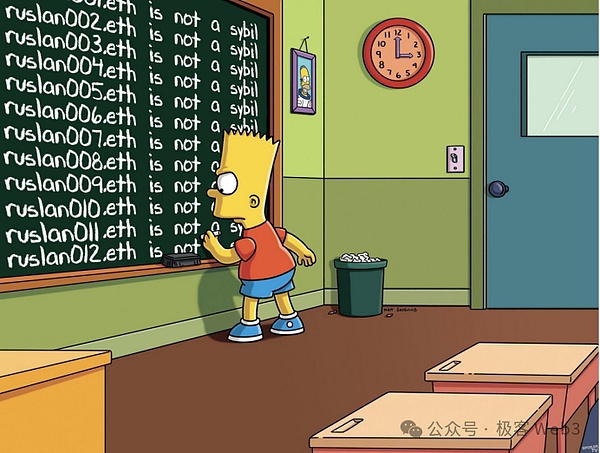
2. Clues in non-EVM chains and testnet addresses. Although witch players interact cautiously on the EVM chain and use various anti-witch methods, their interactions in the non-EVM ecosystem may reveal their true colors. Witch hunters can find witch clusters through the association between EVM addresses on Aptos, Solona, and Starknet wallets. In addition, witch hunters can also find witch addresses on the testnet.
3. Clues in on-chain voting behavior. A witch hunter used the correlation of voting behavior for StargateDAO in Snapshot as a basis, and finally found 7404 witch addresses, belonging to 211 clusters, based on the correlation between the behavioral patterns of each address, the time of the first vote, and the interval between previous votes.
Sponsored Business Content
In addition, social media accounts have also become a basis for witch hunting. Potential witch accounts can also be identified through the content of account posts, mutual connections, and even by inferring the connection based on the invitation link sequence number. Although this method has not been fully adopted, its reference significance cannot be ignored.
If the identity of a witch is inferred by behavioral similarity, for a single entity with multiple active accounts, even if there is no direct connection between the addresses, it is inevitable that it will be detected due to similar behavior during long-term use.However, the above method is more based on inference, lacks direct evidence, and there is a risk of mistakenly killing non-witch users. Therefore, after publishing the witch list, LayerZero still opens the opportunity for the community to appeal to reduce the rate of mistaken killing.
To sum up, in the community reporting system, there is a game relationship between witch hunters, users and airdrop studios. If the Luma Studio surrenders itself, it can still get 15% of the original reward; if the witch judgment criteria are not determined, the witch hunter can "lure the snake out of the hole" through the official and community reporting channels, and get 10% of the airdrop income of the reported account. In order to avoid wasting energy, the witch hunter must ensure that the reported address is originally eligible for the airdrop.
From the final result, LayerZero only distributed 8.5% of the tokens to the community of 1.2 million people at the TGE. There are too many monks and too little porridge, and the amount of airdrops people get is not ideal. Even the income of the top 5% of users is also average. Whether it is the surrenderer or the witch hunter, the income is not high. This can be confirmed by the data leaked in the media.
In addition, Layerzero officially confiscated 10 million tokens that belonged to the witch addresses. Although the team has not yet announced the final list of witches, it is inferred from the previous rounds of lists that the number of addresses involved in the final list is no less than 1 million, which is the largest witch database in the history of Web3. This move triggered an unprecedented battle royale. The wool party was more cautious when interacting with projects that have not yet TGE, and even made many people give up the wool interaction of cross-chain bridges such as Hyperlane, Bungee and LiFi.
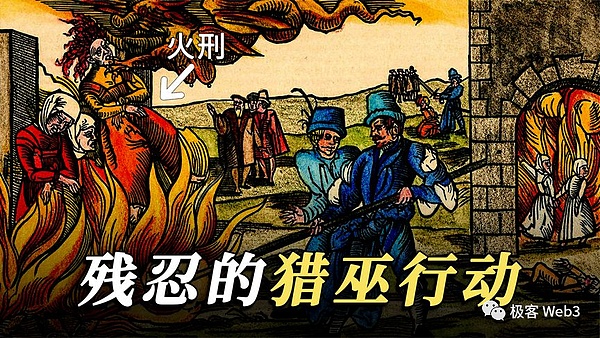
Redefining Witches
After Layerzero announced the witch hunt, ZkLink, Linea, and Drift followed suit and joined the action. The witch hunt atmosphere spread to other ecosystems, and even staking and verification nodes were included in the scope of the witch hunt. However, different projects have different definitions of "witches", and there is still a lot of ambiguity in the positioning of real users and witches.
Although Nomis and Trustalbas have introduced indicators to measure user authenticity, many projects have not subdivided the difference between Farmer and Sybil, but directly defined some Farm behaviors with non-real user traces as witches. For example, Wormhole regards brush transactions as junk transactions and classifies them as witch behavior, confiscating the user's related rewards; Similarly, Layerzero defines Farmer's commonly used apps as witch applications, and defines users who frequently use "witch farming" programs such as Merkly, L2Pass, and L2Marathon, as well as users with worthless NFTs and small cross-chain as witches. However, Layerzero ultimately only downgraded the use of cross-chains below $1 and low-quality NFT cross-chains, and did not blacklist them, which is indeed more reasonable. Blast: Points-based airdrops are heading for collapse As an alternative to interactive airdrops, the points system has been controversial since its inception. On the one hand, the uncertainty of airdrops, the opacity of points, and the project party can arbitrarily modify the points rules. For example, in Eigenlayer and Drift Protocol, the points obtained by users staking real money are claimed not to be the main basis for airdrops, and Etherfi has even seen the phenomenon of points shrinking and stealing points; on the other hand, even for open points, the future dilution situation is still unknown. Taking the multiple rounds of Odyssey activities initiated by Linea as an example, the points may be diluted in the future due to various activities, extended TGE time and other factors. These practices of the project party are vividly called "PUA" by users. When it comes to point-based airdrops, Blast is its originator. There are two types of point systems. Users can get ordinary points through deposits and gold points through on-chain interactions. However, Blast has only had the concept of ordinary points before, and suddenly introduced gold points after the mainnet was launched. The difference between the two is that ordinary points are obtained through the positive correlation between pledged assets and duration, while gold points require users to continue to participate in the interaction after the mainnet is launched. Gold points can multiply the user's ordinary points, up to 120 times the ordinary points.
Originally, people thought that the pledge activity would end when the Blast mainnet was launched, and the airdrops would be distributed according to the ordinary points at that time, but after the pledge activity ended, Blast suddenly launched the gold points mechanism, catching people off guard.
First of all, Blast was one of the first projects to use the points system for airdrops. The core of this system is that users with more pledged assets and longer duration will receive more airdrops, but the 120-fold multiplier of gold points has diluted the benefits of early users at the cost of a large amount of locked positions without a lower limit.
Secondly, the gold points mechanism requires users to keep all pledged assets on the Blast network for interaction, because the project did not take a snapshot after the mainnet went online, but continued to obtain ordinary points based on the amount of assets as before. In this case, if users withdraw most of their assets and only leave a small amount of assets for interaction, the growth rate of ordinary points as the base will drop significantly, and the role of gold points will be greatly reduced. Qualitatively speaking, this is a typical "reverse pull".
In short, Blast has made every effort to significantly reduce the benefits obtained by airdrop players and tried to keep user assets on the Blast chain, but people are not buying it. After the rules were announced, Blast's TVL dropped by $1 billion in just 10 days, a decrease of 1/3.

After endless recruitment, interaction, and deposits, the points system eventually evolved into a competition of social influence, a game for big players. KOLs use their social influence to invite users, and then get the airdrop weight to enjoy the fruits of their labor. Big players have an innate advantage in the points game based on deposits. Sun Yuchen received a share of up to 4.26% in the first season of EigenLayer's airdrop.
When the airdrop of the points project no longer recognizes points, and the points are diluted in various ways, the points that users have worked hard to earn may even lose their qualifications due to witch censorship. This distribution method will gradually be spurned by the community. Blast's large-scale anti-slip has made more and more people unwilling to sacrifice their opportunity costs in exchange for those invisible and intangible points. The rise of the points system began with Tieshun, and may end with Tieshun.
The sun is setting on the airdrop track
The model of getting rich by airdrop has been hot for 4 years since the summer of Defi, but now it is on the decline. Since the beginning of the year, with the increase in the number of fans of LuMao KOL and the rapid expansion of the scale of LuMao Studio, people's attention to airdrops has shown obvious signs of overheating. In contrast, the airdrop yield of individual users has shown an exponential decline. From Wormhole, Starknet to Taiko, LayerZero, ZKsync and other projects, in just half a year, the airdrop rewards available to a single address have been decreasing at a visible rate.
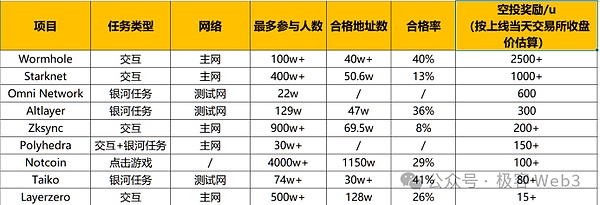
Affected by market and community sentiment, many projects did not perform well during TGE. The low sentiment in the community can be attributed to the low return on investment of users, while the negative sentiment in the secondary market reflects investors' dissatisfaction with low circulation and high FDV projects.
In hindsight, community members reacted strongly to projects such as ZKsync, LayerZero, and Taiko, which required long-term interaction and were eventually reversed, and issued voices of crusade. In contrast, projects such as Avail, Dymension, and Celestia, which issued airdrops to non-ecological users, did not cause much controversy. This is because the airdrops do not require users to interact too much in the ecosystem, and the wool party does not pay too much cost, which is a pleasant surprise for the recipients.
To sum up, the original intention of airdrops is to attract real users with expected rewards, but the track of hair-pulling is not what the project parties want to see. The various strange phenomena that have appeared recently can be attributed to the long-standing incentive incompatibility between airdrop farmers and project parties.
In order to get rewards, airdrop farmers spend a lot of time and money, and conduct a lot of meaningless interactions, thinking that they deserve a lot of rewards; while project parties are more willing to distribute rewards to real users who contribute to the reputation of the project. These two are contradictory, but a few years ago, anti-witch resources were scarce, and the threshold for airdrops was lowered, which made it normal for most people to make profits. Many airdrop farmers just wanted to get rewards, and abandoned the project after the airdrop was issued, so the airdrop could not achieve the expected effect of the project party.
A typical example of this phenomenon is LayerZero, where the user usage rate dropped sharply after the airdrop (as shown in the figure below). It can be said that the so-called strange phenomena and changes in the current airdrop track seem to be returning to the origin, that is, no longer allowing users who have not really contributed to the ecosystem to gain benefits.
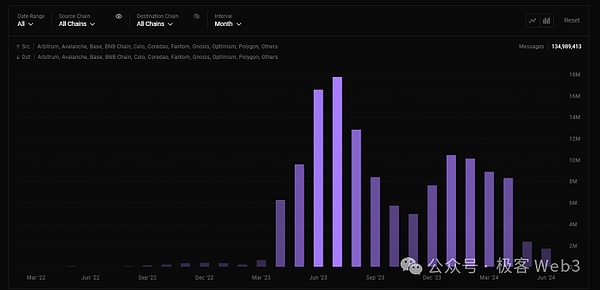
(Source: @Axel_bitblaze69)
Jupiter Lianchuang previously stated that airdrops are a gift to early users, not a reward, loyalty program or growth method. However, after the Arbitrum airdrop, the influx of a large number of studios broke the balance between early users and project parties. And Bryan Pellegrino emphasized that user donations are not mandatory, and obtaining airdrops is not a matter of course.
Nowadays, the large-scale "anti-scam" has greatly cooled down the gold rush of wool-scamming, and the illusion of false prosperity has gradually shattered. For the project parties, ecological construction has also begun to return to rationality. They need to think about how to attract normal users and avoid the erosion of automated witches as much as possible. Whether it is light filtering or excessive hunting, it will cause dissatisfaction and condemnation in the community. For wool-scammers, the era of high odds and big money-spending of airdrops is over. When participating in airdrop activities, they should lower their expectations and stop dreaming of making a fortune by interacting on the chain. This is a really wise move.
In any case, airdrops are either a problem of scarcity or inequality. Now the market capacity of the entire Web3 is close to saturation. With wool-scammers rampant today, getting rich through airdrops has become a bubble.
 JinseFinance
JinseFinance

















